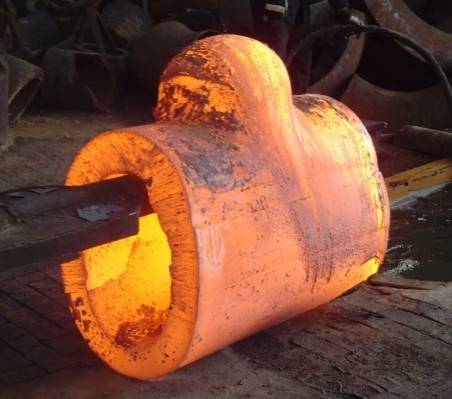Alloy steel forged fittings are crucial in various industries for their superior strength, durability, and resistance to corrosion and high temperatures. The manufacturing process involves several stages to meet stringent quality standards and performance criteria. This guide provides an in-depth look at the manufacturing processes of alloy steel forged fittings, highlighting each critical step.
Selection of Raw Materials
The manufacturing process begins with selecting raw materials for high-quality alloy steel. The specific alloy composition is chosen based on the desired mechanical properties and the intended application of the forged fittings. Common alloying elements include chromium, molybdenum, nickel, and vanadium, which enhance the steel’s strength, toughness, and resistance to wear and corrosion.
Heating and Forging
The selected alloy steel billets or ingots are subjected to a heating process in a forge furnace. The heating is carefully controlled to bring the steel to the appropriate forging temperature, which is typically between 1,100°C and 1,200°C (2,000°F to 2,200°F). Once the steel reaches the desired temperature, it is ready for the forging process.
Forging involves shaping the heated steel using compressive forces. This is done using various forging techniques such as open, closed, or drop. The process may involve using hammers, presses, or other forging equipment to shape the steel into the desired fitting form. Forging enhances the steel’s grain structure, improving its mechanical properties and ensuring uniformity.
Trimming and Flash Removal
After the initial forging, the forged fittings often have excess material or “flash” around the edges due to the high-pressure shaping process. Trimming and flash removal are essential steps to remove this excess material and achieve the precise dimensions and shape required for the fittings. This is typically done using trimming presses or other cutting tools.
Heat Treatment
Heat treatment is a crucial step in manufacturing to achieve the desired mechanical properties and microstructure of the alloy steel forged fittings. Depending on the specific alloy and application requirements, the heat treatment process may include annealing, normalizing, quenching, and tempering.
- Annealing: This process involves heating the fittings to a specific temperature and slowly cooling them to relieve internal stresses and improve flexibility.
- Normalizing involves heating the fittings to a temperature above the transformation range and then air-cooling them to refine the grain structure and enhance toughness.
- Quenching and Tempering: Quenching involves rapid cooling of the fittings in water or oil to increase hardness, followed by tempering, which involves reheating the fittings to a lower temperature to achieve the desired balance of hardness and toughness.
Machining and Finishing
Once the heat treatment is complete, the forged fittings undergo machining to achieve the final dimensions and surface finish. This may involve turning, milling, drilling, and threading using precision machining tools and equipment. The machining process ensures that the fittings meet the required tolerances and specifications for their intended use.
Surface Treatment
Surface treatment processes enhance the corrosion resistance and appearance of the alloy steel forged fittings. Common surface treatments include pickling, passivation, and coating. Pickling involves removing surface impurities using acid baths, while passivation enhances the formation of a protective oxide layer. Coating processes like galvanizing or applying protective paints provide additional corrosion protection.
Inspection and Testing
Quality control is a critical aspect of the manufacturing process. Alloy steel forged fittings undergo rigorous inspection and testing to meet industry standards and customer specifications. This may include visual inspection, dimensional checks, non-destructive testing (NDT), ultrasonic or radiographic testing, and mechanical testing to assess properties like tensile strength, hardness, and impact resistance.

